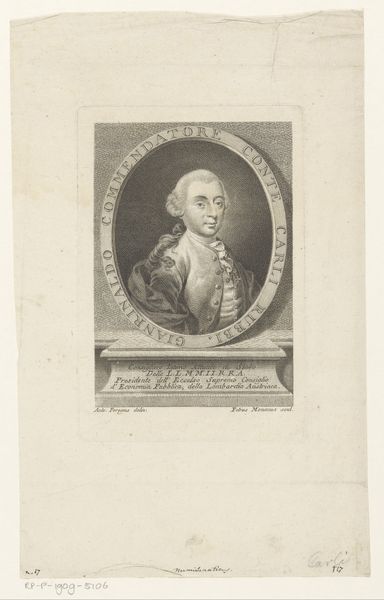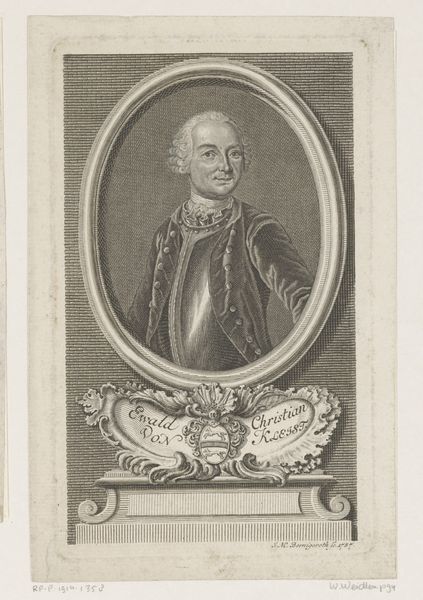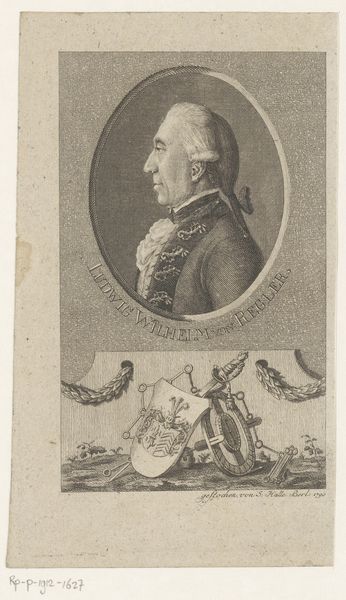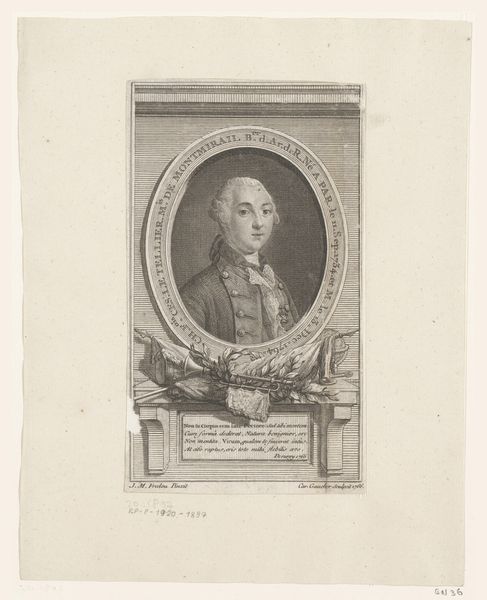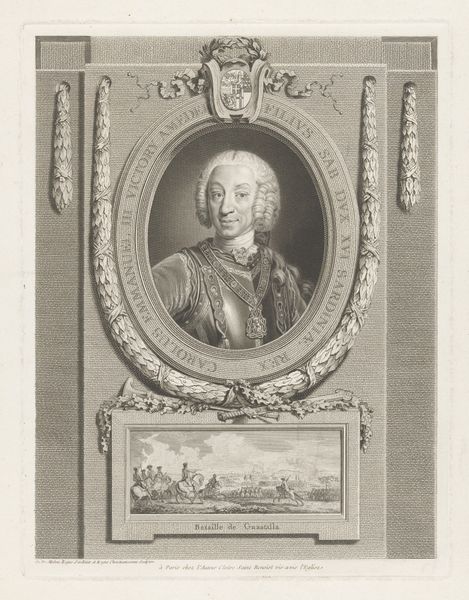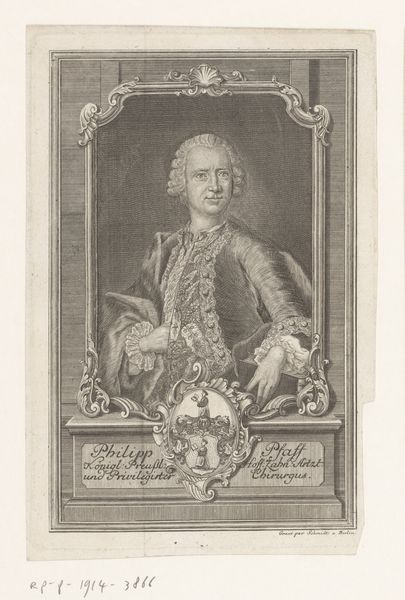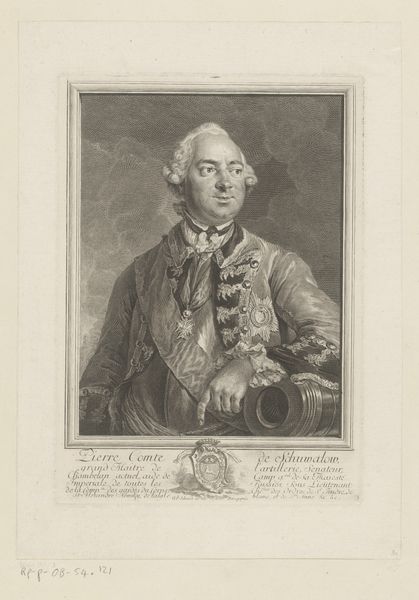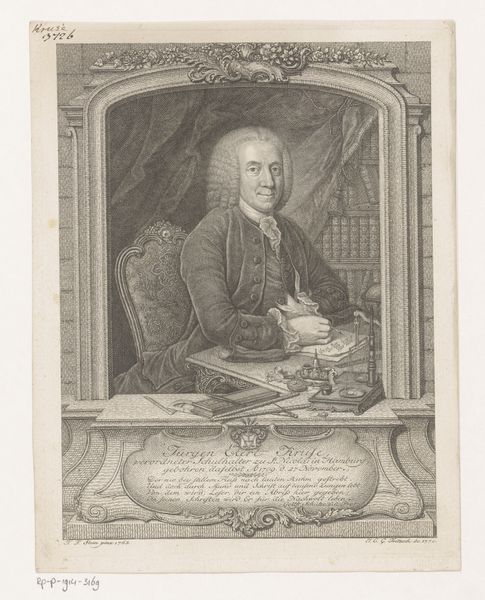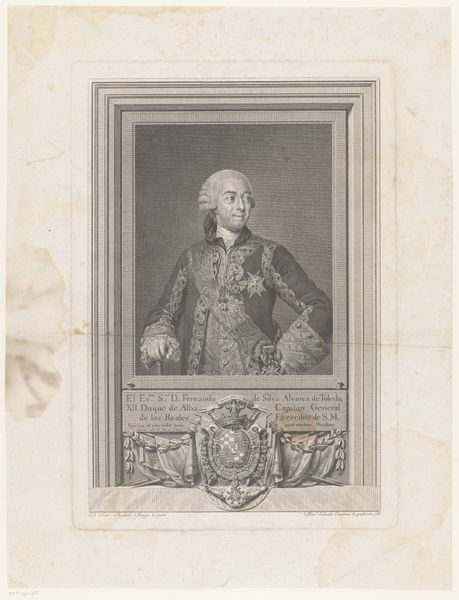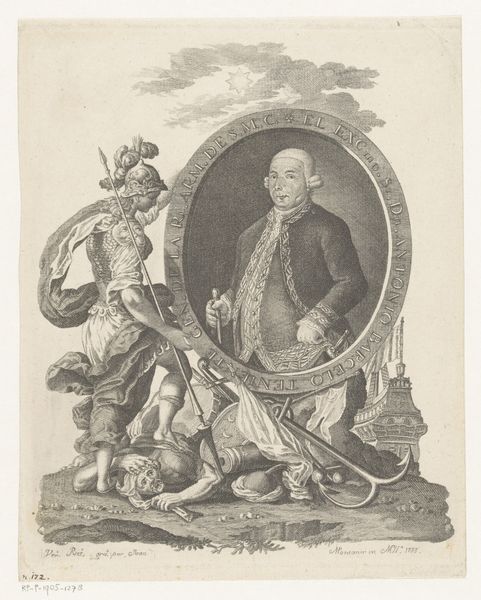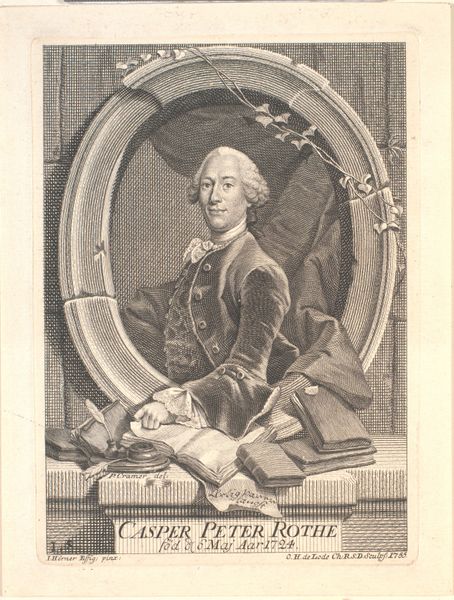
Dimensions: height 378 mm, width 249 mm
Copyright: Rijks Museum: Open Domain
Curator: Christian Jakob Schlotterbeck gives us this portrait engraving of Christoph Dionysius, Freiherr von Seeger, created sometime between 1767 and 1811. What’s your initial take? Editor: It’s imposing, but with a playful quality. The cherubs seem to lighten the seriousness of the Baron’s gaze, almost like they are whispering secrets. Curator: Definitely. It's important to remember that these baroque portrait engravings played a key role in establishing and disseminating power structures of the time. Consider how it speaks to aristocratic identity and societal expectation. We must analyze it within its context of the ruling class's construction of visual identity and control. Editor: The cherubs feel deliberate. The one holding a torch, and another holding what looks like a rolled manuscript or proclamation? The symbols tell of illumination and learnedness; knowledge brought to the people. It makes me wonder what kind of patron he was to the arts and sciences. And then there's that globe, indicating perhaps a global mindset? Curator: Or colonial ambitions. The very format of such commissioned engravings solidified class divisions. The material accessibility—the ability to reproduce and distribute the image—helped manufacture consent to those very divisions. The Baron and his titles are meticulously inscribed beneath the image proper. The letters construct as much as the image. Editor: The way the light is captured creates such dimensionality—it almost gives him a life that moves beyond the stoicism expected in these kinds of stately presentations. I wonder, did viewers recognize symbols then that are obscure to us now? The coronet and various ornaments hanging around the Baron's neck communicate particular affiliation with wealth and title, I'd guess? Curator: Indeed. And Schlotterbeck's baroque style choice harkens back to an aesthetic steeped in aristocratic notions of lineage, class and order. Considering Schlotterbeck's social circles, it's also pertinent to question the politics embedded within what may appear as purely decorative elements. Editor: It is intriguing how an object produced to celebrate a particular individual becomes, centuries later, a document speaking volumes about larger cultural power dynamics at work. Curator: Precisely. It pushes us to question and expand beyond the obvious and to read the silent and complicated socio-political languages inherent in art of this period.
Comments
No comments
Be the first to comment and join the conversation on the ultimate creative platform.

